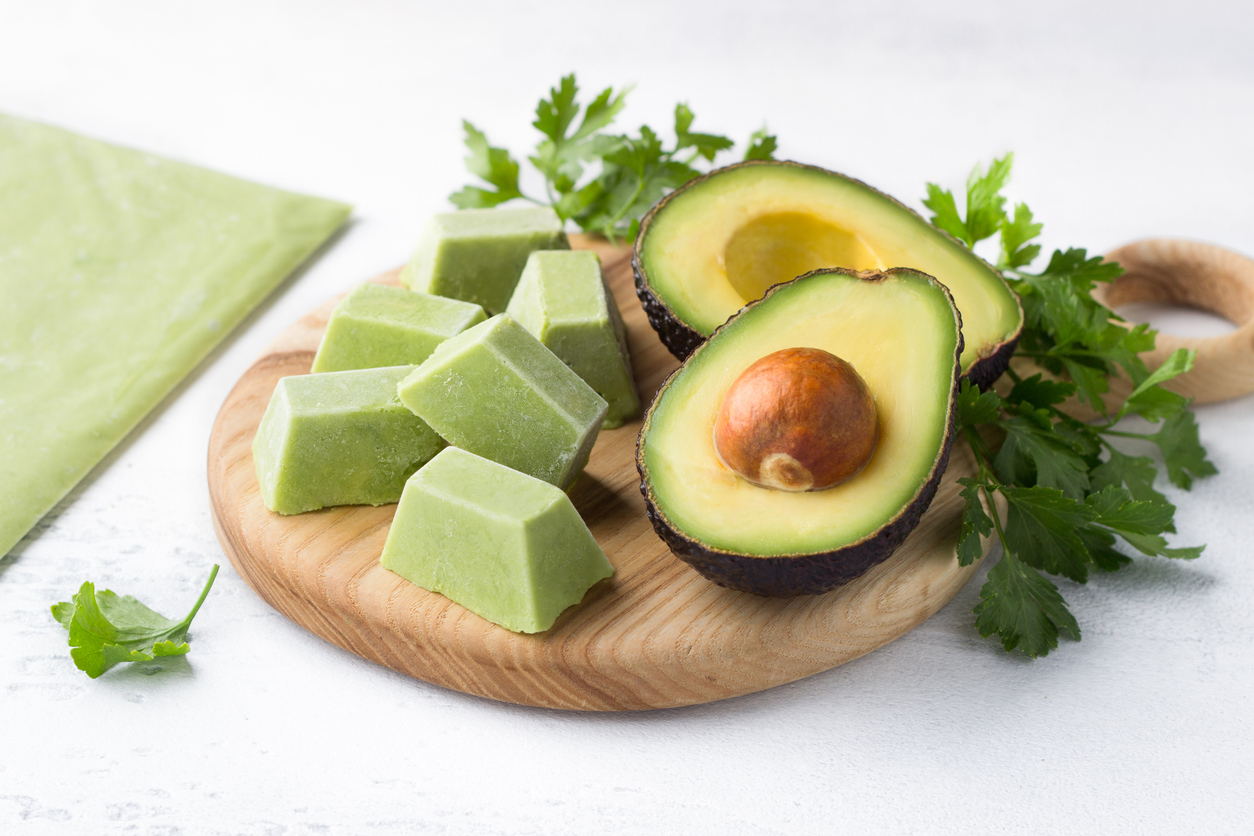Wholesale Avocado Prices Soar: What Does It Mean for Consumers and Producers?
Wholesale Avocado Prices Soar: What Does It Mean for Consumers and Producers?
Avocado lovers, brace yourselves for some shocking news! The wholesale avocado prices have reached unprecedented heights, leaving both consumers and producers in a whirlwind of uncertainty. Yes, you heard it right – your beloved guacamole ingredient is now proving to be as precious as gold. But what does this skyrocketing cost mean for all the avocado aficionados out there? And how are the hardworking farmers coping with these soaring prices? In this blog post, we delve deep into the fascinating world of avocados to unravel the mysteries behind this sudden surge in costs. So grab your nachos and join us on this rollercoaster ride through the realms of economics and agriculture!
Introduction to the Avocado Industry
Introduction to the Avocado Industry:
The avocado industry has been rapidly growing over the past few decades, with global demand for this popular fruit on the rise. From trendy avocado toast to nutritious guacamole, avocados have become a staple in many households and restaurants around the world.
Avocados are native to Central and South America but are now cultivated in many other countries including Mexico, Chile, Peru, and even parts of the United States. Mexico is currently the largest producer of avocados, accounting for over 30% of global production.
The popularity of avocados can be attributed to their unique creamy texture, rich flavor, and nutritional benefits. They are high in healthy monounsaturated fats and contain various vitamins and minerals such as potassium, vitamin C, and folate. This makes them a popular choice among health-conscious consumers.
In recent years, the avocado industry has faced several challenges due to natural disasters such as droughts and floods which have affected crop yields. Additionally, there have been labor shortages in some regions leading to higher production costs. These factors have contributed to fluctuations in wholesale prices of avocados globally.
Impact on Consumers:
As wholesale prices of avocados soar due to various factors affecting production costs, consumers may notice an increase in retail prices at grocery stores or restaurants. This can be especially noticeable during peak seasons such as summer when demand for avocados typically spikes.
Factors Affecting Avocado Prices
The price of avocados has been on the rise in recent years, leaving both consumers and producers wondering what could be causing this surge. There are several factors that can affect avocado prices, including weather conditions, demand, transportation costs, and even government policies.
One of the biggest factors affecting avocado prices is weather conditions. Avocados are primarily grown in warm climates and require a specific amount of rainfall to thrive. Any severe weather events such as droughts or hurricanes can significantly impact the supply of avocados and cause prices to increase. For example, in 2019, California experienced an unusually long period of rain which led to a decrease in avocado production and subsequently resulted in higher prices for consumers.
Another factor that affects avocado prices is demand. The popularity of avocados has skyrocketed in recent years due to their versatility and nutritional value. This increased demand from both domestic and international markets has put pressure on producers to meet the growing needs. When demand exceeds supply, it causes a shortage which drives up the prices.
Transportation costs also play a crucial role in determining avocado prices. Most avocados consumed in the United States come from Mexico, making them subject to import tariffs and transportation fees. A change in these costs can directly impact the final retail price paid by consumers.
In addition to natural factors like weather conditions and demand, government policies can also affect avocado prices.
The Recent Spike in Wholesale Avocado Prices
The recent spike in wholesale avocado prices has caused a stir in both the consumer and producer market. In the last few months, prices for avocados have increased significantly, with some reports stating an increase of up to 50%. This sudden surge in price has left many wondering what exactly is causing it and how it will affect both consumers and producers.
One of the main factors contributing to the rise in wholesale avocado prices is the high demand for this popular fruit. Avocados have become a staple in many households, with their versatility and health benefits making them a go-to ingredient for various dishes. The growing popularity of avocados has led to an increase in demand from not only consumers but also restaurants and other food establishments. This surge in demand has put pressure on producers to meet supply, leading to an increase in prices.
Another factor that has contributed to the spike in wholesale avocado prices is seasonal fluctuations. Avocado production typically peaks during late spring and early summer, leading to lower prices during these months. However, as we move into fall and winter, production decreases, resulting in higher prices due to limited availability. Additionally, natural disasters such as hurricanes or droughts can also impact avocado crops and lead to shortages, further driving up prices.
Climate change is another significant factor that plays a role in the recent price hike of avocados. As temperatures continue to rise globally, it affects agriculture worldwide, including avocado production.
Impact on Consumers
The recent spike in wholesale avocado prices has caused quite a stir in the market, leaving consumers and producers alike wondering about its impact. Avocados have become a staple in many households, with their versatile use from breakfast to dinner menus, making this price surge a cause for concern.
First and foremost, the increase in wholesale avocado prices will directly affect consumers’ wallets. As avocados are sold by weight, any change in their price will reflect on the overall cost of purchasing them. This means that consumers may have to pay more for their favorite avocado toast or guacamole recipe. For those who are on a tight budget or rely heavily on avocados as part of their daily diet, this sudden increase could be an unwelcome burden.
Moreover, the rise in avocado prices can also lead to changes in consumer behavior. In order to cope with the higher prices, some consumers may choose to reduce their consumption of avocados or even eliminate them from their grocery list altogether. This could result in a decrease in demand for avocados, which can further impact producers and suppliers.
On the other hand, for those consumers who are willing and able to pay the higher prices for avocados, there may be no significant change. However, they may experience some fluctuations in availability as farmers prioritize selling to wholesalers at higher rates rather than supplying them directly to local markets.
– Increase in Retail Prices
The recent spike in avocado prices has left consumers and producers alike wondering what is causing this sudden increase. Retail prices for avocados have risen significantly in the past few months, with some stores charging as much as $3 per avocado. This is a major jump from the average price of $1.25 per avocado that consumers were used to paying.
There are several factors contributing to this increase in retail prices, including weather conditions, transportation costs, and demand from both domestic and international markets.
One of the main reasons for the rise in retail prices is due to unfavorable weather conditions affecting avocado production. Avocado trees require specific climate conditions to thrive and produce a healthy crop. The recent droughts and heatwaves in California and Mexico – two major suppliers of avocados – have resulted in smaller yields than usual. This shortage of supply has led to an increase in wholesale prices, which ultimately gets passed on to consumers at the retail level.
Another factor driving up retail prices is the rising cost of transportation. Avocados are typically grown in warmer regions such as California and Mexico but are consumed worldwide. As a result, they need to be transported long distances before reaching their final destination. With fuel costs on the rise, it’s become more expensive for producers to ship avocados across borders, leading to higher overall costs that get reflected in retail prices.
– Effects on Consumer Purchasing Habits
The recent surge in wholesale avocado prices has caused a ripple effect in the produce industry, leading to changes in consumer purchasing habits. As one of the most popular and versatile fruits, avocados have become a staple in many households and the increase in prices has not gone unnoticed by consumers. In this section, we will discuss the various effects that these soaring prices have had on consumer purchasing habits.
1. Decrease in Consumption
One of the most immediate effects of high avocado prices is a decrease in consumption among consumers. With many already struggling to keep up with rising grocery costs, adding an expensive item like avocados to their shopping list may no longer be feasible for some individuals and families. This can lead to a decline in avocado sales and ultimately impact producers who rely on consistent demand for their product.
2. Shift towards Alternative Options
As avocados become more expensive, consumers may start looking for alternative options to replace them in their meals. This could mean opting for other types of fruits or vegetables that are more affordable or choosing different spreads or toppings for dishes traditionally made with avocado such as guacamole or toast. Such shifts can have a significant impact on both producers and retailers who depend on avocado sales.
3. Increase in Demand for Local Produce
Another potential effect of high wholesale avocado prices is an increase in demand for locally grown produce. With transportation costs contributing to overall price increases, consumers may opt to support local farmers instead of paying premium prices for imported avocados.
Impact on Producers
The recent surge in wholesale avocado prices has left many consumers wondering how it will affect their grocery budget. However, the impact of these soaring prices extends beyond just the pockets of consumers – it also greatly affects the producers who grow and supply avocados to the market.
One of the main impacts on avocado producers is increased profits. As demand for avocados continues to rise, producers are able to charge higher prices for their product. This means that they can make more money from each avocado sold, leading to a significant increase in their overall profits. This is particularly beneficial for small-scale farmers who rely on avocados as their primary source of income.
However, this increase in profits does not necessarily mean that all avocado producers are benefiting equally. In fact, larger commercial farmers may actually have an advantage over smaller ones in this situation. Due to economies of scale, bigger farms typically have lower production costs and can therefore still make a profit even with lower prices or fluctuations in market demand. Smaller farms may struggle to keep up with rising costs and could potentially be forced out of the market if they cannot compete.
Another impact on producers is changes in supply and demand dynamics. With higher prices, there is an incentive for more farmers to enter the market and start growing avocados. This could lead to an oversupply of avocados in the future if demand were to suddenly drop or new sources become available from other countries.
– Reasons for Higher Prices for Producers
There are several factors that can contribute to higher prices for producers when it comes to wholesale avocados. In this section, we will discuss some of the main reasons for the recent increase in avocado prices and how they affect producers.
1. Global Demand:
The demand for avocados has been steadily rising worldwide, particularly in countries like China and Europe. This increased demand puts pressure on producers to produce more avocados to meet the market needs, which can lead to higher production costs.
Additionally, countries like Mexico, which is the largest producer of avocados, have seen a decrease in production due to extreme weather conditions and labor shortages. This disruption in supply has further contributed to the rise in avocado prices.
2. Rising Production Costs:
The cost of producing avocados has also been on the rise. Avocado trees take several years before they start bearing fruit, and during this time, farmers have to invest in irrigation systems and fertilizers. As demand for avocados increases, so does the cost of these essential inputs.
Furthermore, transportation costs also play a significant role in determining avocado prices for producers. Most of the world’s avocado supply comes from Latin American countries such as Mexico and Chile. The high cost of transporting these perishable fruits via air or sea adds up significantly and is passed onto producers, ultimately increasing their overall costs.
– How Producers are Respondin
The sudden increase in wholesale avocado prices has caused many consumers to wonder how producers are responding to this shift in the market. In this section, we will explore the various ways that avocado producers are adapting to the soaring prices.
1. Increase in production: With demand for avocados at an all-time high, many producers have sought to increase their production to meet the growing needs of consumers. This means ramping up planting and harvesting processes, investing in new technology and equipment, and hiring more workers.
2. Expansion into new regions: Some producers have also responded by expanding into new regions where avocados can be grown. For instance, Mexico has traditionally been a major supplier of avocados to the United States, but now countries like Colombia and Peru are also entering the market as suppliers.
3. Promoting alternative varieties: The rising wholesale avocado prices have prompted some producers to promote alternative varieties of avocados that may be more affordable and easier to produce. For example, Hass avocados are known for their creamy texture and rich taste but they also require specific growing conditions which make them more expensive than other types such as Fuerte or Bacon.
4. Diversifying product offerings: Producers are also diversifying their product offerings beyond fresh avocados. Many companies now offer frozen or dried versions of the fruit, allowing them to reach a wider range of customers who may not be willing or able to purchase fresh ones at higher prices.
Potential Solutions and Future Outlook
Potential Solutions:
The soaring wholesale avocado prices have become a cause of concern for both consumers and producers. However, there are some potential solutions that can help alleviate the situation.
1. Increase in Domestic Production: One possible solution to tackle the high prices is to increase domestic production of avocados. This can be achieved by providing incentives and support to local farmers, promoting sustainable farming practices, and investing in research and development for new avocado varieties that can thrive in different regions.
2. Diversification of Suppliers: Another solution could be diversifying the sources from where avocados are imported. Currently, Mexico is the largest supplier of avocados to the United States markets. By expanding trade relations with other countries like Chile, Peru, and Colombia, it may help reduce dependence on one country and provide more options for sourcing avocados at a competitive price.
3. Improving Supply Chain Efficiency: A major factor contributing to high avocado prices is inefficiencies within the supply chain. From harvesting to distribution, there are several steps involved in getting avocados from farm to market which adds up to their final cost. By streamlining processes and improving logistics efficiency, retailers can ensure a steady supply of avocados at affordable prices.
4. Consumer Education: Educating consumers about the factors affecting avocado prices can also play a role in finding solutions. Consumers often take fruits like avocados for granted without considering the costs associated with growing, harvesting, importing or exporting them.
– Efforts to Increase Supply
Efforts to Increase Supply
As the demand for avocados continues to rise, producers are facing pressure to increase their supply in order to meet consumer needs. However, increasing supply is not as simple as planting more avocado trees and expecting an immediate yield. There are various factors that can affect avocado production and it takes time and effort to implement effective solutions.
One of the main challenges in increasing avocado supply is the long maturation period of the fruit. On average, it takes 3-4 years for a newly planted avocado tree to produce its first crop, with peak production occurring after 7-10 years. This means that even with increased planting, there will be a delay in seeing the effects on market supply.
To address this issue, efforts have been made towards developing new varieties of avocados that have shorter maturation periods and higher yields. For example, a variety called “GEM” has recently gained popularity among growers due to its ability to produce fruits within 18 months of planting compared to the usual 3-4 year period. These new varieties also have characteristics such as disease resistance and longer shelf life which make them attractive options for growers.
Another approach towards increasing supply is through improving cultivation practices. Avocado trees require specific soil conditions and climate for optimal growth which can vary greatly from region to region. By implementing better farming techniques such as proper irrigation systems, pest control measures, and soil management methods, farmers can significantly increase their yield per tree.
– Predictions for Future Prices
The future of wholesale avocado prices is a topic of great interest and concern for both consumers and producers. With the recent surge in prices, many are wondering what lies ahead for this popular fruit. In this section, we will discuss some predictions for the future of avocado prices and how they may impact both consumers and producers.
1. Continued Increase in Prices:
Many experts predict that avocado prices will continue to rise in the near future. This is due to several factors such as increased demand, limited supply, and production challenges. As more and more people around the world discover the health benefits of avocados, demand for this versatile fruit continues to grow. At the same time, unpredictable weather patterns and crop diseases have led to a decrease in supply, driving up prices.
2. Impact on Consumers:
For consumers, these rising prices mean paying more at the grocery store or farmers’ market for their beloved avocados. This can be particularly challenging for those who rely heavily on avocados as part of their diet or for those with limited budgets. As prices continue to increase, it may become more difficult for some individuals or families to afford this nutritious superfood.
3. Potential Alternatives:
As avocado prices soar, consumers may start looking for alternatives or substitutes to satisfy their craving for healthy fats and nutrients found in avocados. Some options include other fruits such as bananas or mangoes which are also rich in vitamins and minerals but at a lower cost.
Conclusion
The recent surge in wholesale avocado prices has had a significant impact on both consumers and producers. While it may mean higher prices for avocados at the grocery store, it also presents an opportunity for avocado farmers to increase their profits. Additionally, this price increase highlights the growing demand for avocados and the need for sustainable farming practices to meet that demand. As consumers, we can make informed choices about our purchases and support responsible avocado production. This situation serves as a reminder of the interconnectedness of our global food system and the importance of considering both economic and environmental factors when making decisions about what we eat.








Comments are closed.